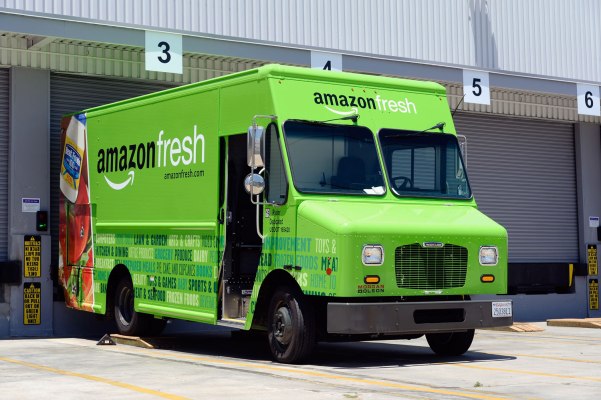Amazon today announced changes to its grocery delivery service designed to make ordering from Amazon Fresh more competitive with rivals like Instacart, Walmart, Target-owned Shipt, DoorDash and others. The company says that, now, customers will no longer need an Amazon Prime membership to order groceries from Amazon Fresh for delivery or free pickup. The expansion will be available everywhere Amazon Fresh is offered across the U.S., and a similar option will soon be available to Whole Foods shoppers, as well.
The retailer didn’t indicate a specific time frame as to when grocery delivery or pickup would be available for Whole Foods without a Prime membership. However, it noted that after this latter part of the grocery expansion is completed, customers in more than 3,500 U.S. cities and towns would have the option of ordering two-hour grocery delivery from either Amazon Fresh or Whole Foods Market, depending on availability.
Alongside this news, the company says that Amazon shoppers will also now be able to order from local grocers and specialty shops through the Amazon website, including stores like Bristol Farms, Cardenas Markets, Pet Food Express, Weis Markets and Save Mart.
Amazon Fresh is not a free service, even for Prime members, but Amazon’s membership program will come with some discounts. For example, Fresh orders over $100 will still be free if you have a Prime membership, and won’t include a delivery fee. Meanwhile, two-hour deliveries otherwise will include a service fee of $6.95 for orders ranging from $50-$100, and $9.95 for deliveries under $50, for Prime members. Non-members will be charged between $7.95-$13.95 depending on their basket size and the delivery window selected. Flexible orders with delivery times of up to six hours may also receive a fee reduction, while rushed orders may include additional fees.
For grocery pickup with Amazon Fresh, the company offers stores in California, Illinois, Maryland, New Jersey, New York, Pennsylvania, Virginia, Washington, D.C. and Washington State. Some of these stores will also offer Amazon’s cashierless payment option, Just Walk Out where customers pay with a palm reader. Others may be testing the smart shopping cart option Dash Cart. Amazon also noted that its redesigned Amazon Fresh stores in Chicago will now be followed by similar updates to three LA area stores (Pasadena, Irvine and Woodland Hills), and it plans to open more stores in 2024.
Both Amazon Fresh stores and Whole Foods Market locations can also be used for package pickup and return for Amazon.com orders, and those using this service in Fresh stores will receive coupons to use in-store.
The move, while significant in terms of broadening Amazon’s grocery reach, is indicative of how far Amazon has fallen behind in the broader online grocery market. Operating different grocery brands has led to consumer confusion — particularly in markets where both services are available with their own unique product selections. And limiting grocery orders to Prime customers for all these years has allowed rivals to get ahead — particularly Walmart, where its Walmart+ membership is cheaper ($98/year) and grocery delivery is free for orders at $35 and up. Walmart’s non-members also pay less, at $7.95-$9.95 for delivery fees.
As a result of the competition and pricing, Amazon’s grocery business has declined. The Information reported in December 2022 that Amazon Fresh stores were running empty and store openings had slowed. This came after the closure of other physical retail locations earlier that year. Amazon also closed several of its convenience stores this year, too, and was said to be was pausing its Fresh store expansion, per Bloomberg.
A study from Coresight Research in 2022, also found that 56.9% of Prime members had bought groceries from the retailer in 2022, a dip from the 57.7% who did in 2021 and the 70.6% who did in 2019. Meanwhile, 30% of survey respondents said they did most or all of their shopping at either Walmart, Sam’s Club, Target or Costco, while only 27.5% said the same for Amazon.
This year, Walmart accounted for close to 36% of all U.S. online grocery sales in Q2, a record high, and up five percentage points from a year ago. It also surpassed supermarkets’ share for the third quarter in a row.
